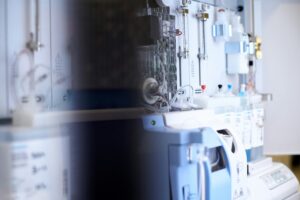Introduction
Rubber is a crucial material that plays a vital role in various industries, from automotive and construction to healthcare and consumer goods. To ensure the quality and reliability of rubber products, manufacturers face numerous challenges in the production process. Analytical instrumentation, particularly gas chromatography, emerges as a valuable tool in overcoming these challenges. In this article, we will delve into the challenges faced by the rubber industry and the indispensable need for analytical instrumentation, highlighting the significance of gas chromatography.
Understanding Rubber Composition
Rubber production involves a complex mixture of raw materials, including natural rubber, synthetic rubber, fillers, vulcanization agents, and additives. Achieving the desired properties and performance of rubber requires a comprehensive understanding of its composition. Analytical instrumentation, such as gas chromatography, enables precise characterization and quantification of individual components within rubber compounds. By identifying the chemical composition, manufacturers can optimize formulations, improve product consistency, and enhance overall quality control.
Monitoring Raw Material Quality
The quality and consistency of raw materials directly impact the final product’s performance and durability. Analytical instrumentation allows manufacturers to evaluate the quality of incoming raw materials. Gas chromatography, in combination with other techniques, helps detect impurities, assess material purity, and identify any potential contaminants or variations in composition. By implementing rigorous quality control measures, manufacturers can mitigate risks associated with substandard raw materials, ensuring consistent production and reliable end products.
Controlling Vulcanization Process
Vulcanization, a crucial step in rubber production, involves cross-linking polymer chains to impart desired properties such as elasticity and resistance. Achieving the optimal vulcanization process requires precise control of temperature, time, and the type and amount of vulcanization agents used. Analytical instrumentation, including gas chromatography, facilitates the monitoring of vulcanization reactions by quantifying the degree of cross-linking and identifying byproducts. This information enables manufacturers to fine-tune vulcanization conditions, ensuring consistent product quality and performance.
Analyzing Emissions and Byproducts
During rubber production, various emissions and byproducts can be generated, including volatile organic compounds (VOCs) and hazardous air pollutants (HAPs). These emissions not only pose environmental concerns but also affect worker safety and product quality. Analytical instrumentation, such as gas chromatography coupled with UV spectrometry (GC-UV), allows for the accurate identification and quantification of these compounds. By monitoring emissions and byproducts, manufacturers can implement effective control measures to reduce environmental impact, comply with regulations, and ensure a safe working environment.
Research and Development
Continuous improvement and innovation are key to staying competitive in the rubber industry. Analytical instrumentation, including gas chromatography, supports research and development efforts by providing detailed insights into material behavior and performance. By analyzing rubber compounds at a molecular level, manufacturers can identify opportunities for formulation optimization, explore new materials, and develop innovative rubber products with enhanced properties.
Rubber production involves the use of various substances
Natural Rubber: Natural rubber is derived from the latex sap of the Hevea brasiliensis tree. It primarily consists of polymers of isoprene (C5H8), with minor impurities such as proteins, lipids, sugars, and inorganic materials.
Synthetic Rubber: Synthetic rubber is produced through the polymerization of monomers derived from petroleum or other sources. Different types of synthetic rubber exist, including styrene-butadiene rubber (SBR), butadiene rubber (BR), nitrile rubber (NBR), ethylene-propylene-diene monomer rubber (EPDM), and many others. These synthetic rubbers consist of various polymers and additives specific to their intended applications.
Fillers: Fillers are added to rubber compounds to improve their properties, such as strength, hardness, and abrasion resistance. Common fillers include carbon black, silica, calcium carbonate, and clay. These fillers may also contain small amounts of impurities and additives.
Vulcanization Agents: Vulcanization is a chemical process used to strengthen and stabilize rubber by cross-linking polymer chains. Sulfur is the most commonly used vulcanization agent, often combined with accelerators, activators, and other additives. These agents facilitate the formation of cross-links between rubber polymer chains.
Plasticizers: Plasticizers are added to rubber compounds to increase flexibility and reduce hardness. They enhance the processability of rubber and improve its resistance to low temperatures. Common plasticizers include oils, esters, and phthalates.
Antioxidants: Antioxidants are used to protect rubber compounds from degradation caused by exposure to heat, oxygen, and light. They help extend the lifespan and performance of rubber products. Common antioxidants include phenols, amines, and phosphites.
Accelerators: Accelerators are additives that speed up the vulcanization process. They activate the reaction between sulfur and rubber, reducing the time required for curing. Common accelerators include thiurams, mercaptobenzothiazoles, and sulfenamides.
Processing Aids: Various processing aids are used during rubber production to improve mixing, flow, and processing characteristics. These aids may include lubricants, dispersing agents, and anti-tack agents.
Analytical instrumentation, particularly gas chromatography, plays a vital role in overcoming challenges faced by the rubber industry. From analyzing rubber composition and monitoring raw material quality to controlling the vulcanization process and analyzing emissions, these instruments provide valuable insights and enable manufacturers to enhance product quality, consistency, and performance. By harnessing the power of analytical instrumentation, the rubber industry can drive innovation, meet stringent quality standards, and ensure the delivery of reliable rubber products across various sectors.




